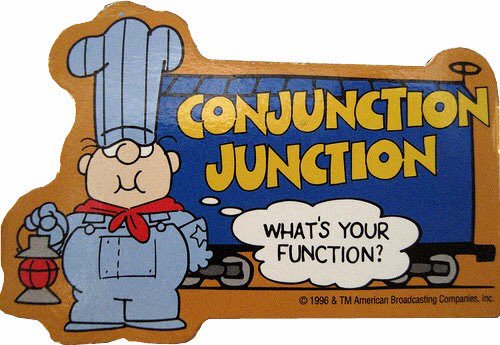CONJUNCTIONS are special words that connect two or more sentences, clauses, or parts of clauses. “Coordinating” and “subordinating” conjunctions are two main types of conjunctions. But what does that mean?
Coordinating conjunctions link together two words, phrases, clauses, or sentences that are grammatically equivalent. You use them when you want to give equal emphasis to two main clauses.
For example, “We have a pig AND a goat.”
For example, “We fed the goat, BUT we forgot to feed the pig.”
There are seven coordinating conjunctions. The way to remember them is to use the trick FANBOYS — For, And, Nor, But, Or, Yet, So.
Subordinating conjunctions link a dependent clause (also known as a subordinate clause) to an independent clause. That means the main clause (main part of the sentence) has a subordinate clause (less important part of the sentence) joined to it. Therefore, the subordinate conjunction provides a necessary transition between the two ideas in the sentence.
For example, “The kids need to clear the table ONCE dinner is finished.”
For example, “George frowned AS he worked on his trigonometry homework.
There are many subordinating conjunctions, but some of the most common are: after, although, before, except, if, since, once, as, and unless.
You can remember the difference between these two types of conjunctions by breaking down the words.
Coordinate = co-ordinate. Co (together) ordinate (order/rank). These conjunctions join two grammatically equal clauses.
Subordinate = sub-ordinate. Sub (below) ordinate (order/rank). The conjunctions join a main clause to a lesser clause.
Finally, what’s the best way to remember what conjunctions do? Think of the old Schoolhouse Rock song: “Conjunction Junction.” Conjunctions are word JUNCTIONS. They JOIN words and phrases and clauses together.

